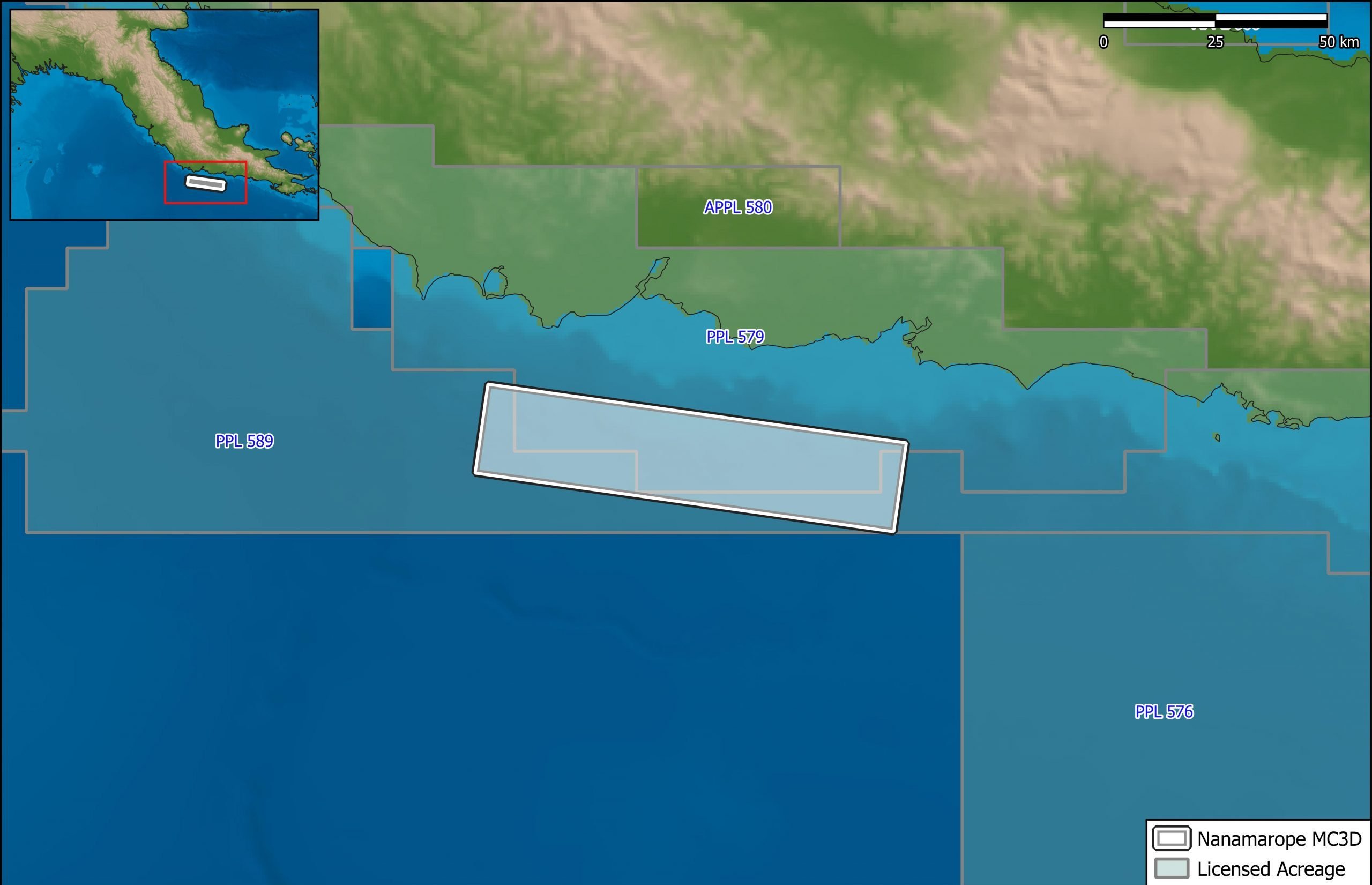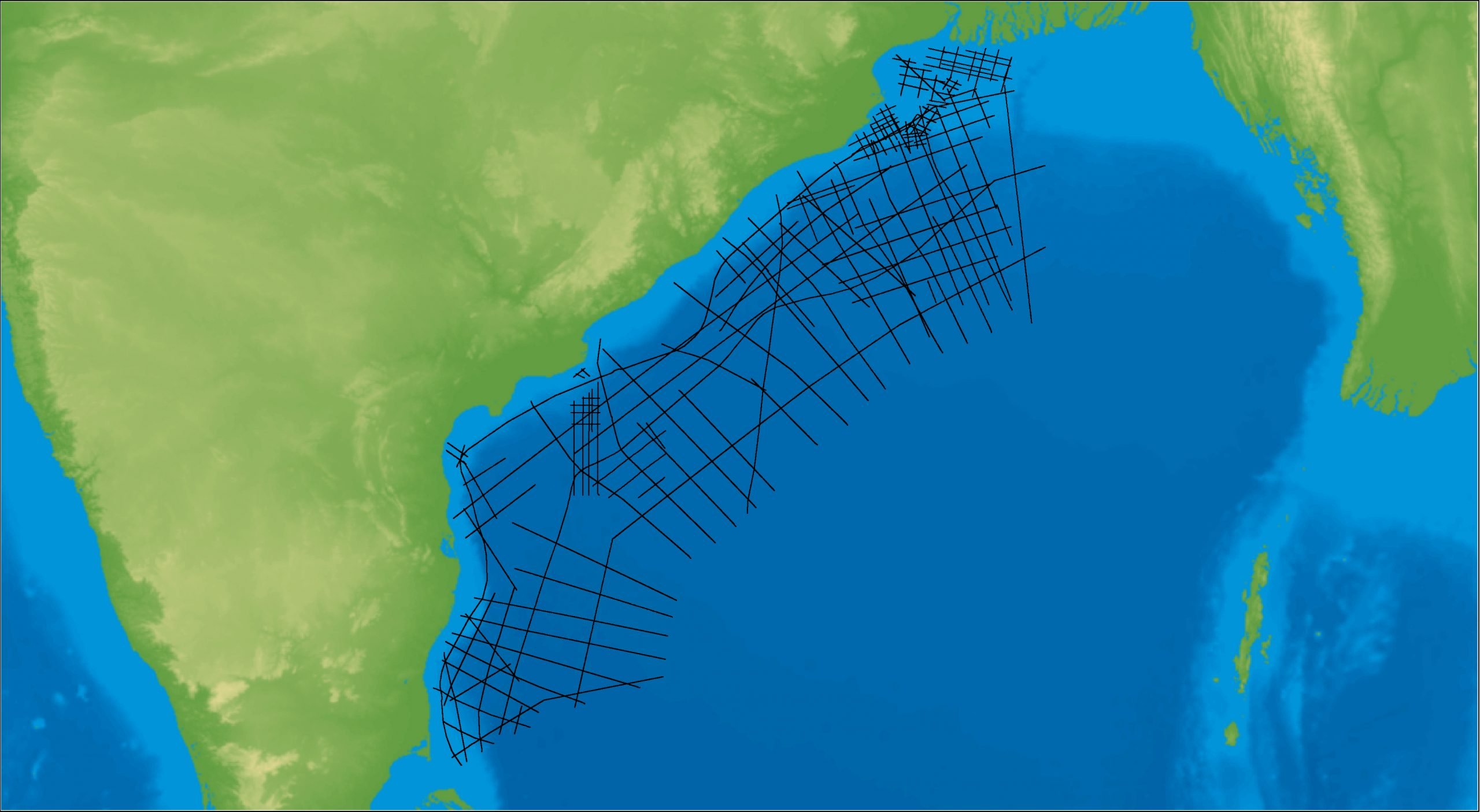The Offshore Peru Conditioned Well Data Package and Well Atlas comprises of 312 wells of which 43 exploration/appraisal conditioned wells have been selected across five offshore Peru basins to form a well post-drilling analysis to complement the seismic database and a well atlas for 27 wells. Petroleum systems elements have been analysed for each well allowing for an evaluation of: reservoir, seal, and charge presence/absence and effectiveness. Key horizons have been mapped using Searcher’s rectified seismic database allowing structural interpretation of each well and its integrity post drill.
The detailed risk assessment includes, a location map, TWT/Depth map and a composite log display is provided showing the conditioned well logs at reservoir level. The modern Well Atlas delivers a catalogue of well results with annotated reasons for failure for each dry hole and test and production results provided for each successful well.
Offshore Peru Prospectivity
Offshore Peru already has a proven prolific oil play and prospectivity within multiple basins containing both thick reservoir seal pairs and a rich array of structural traps, yet offshore Peru remains dramatically under-explored. Hydrocarbon fields both on and offshore along the north coast in the Tumbes-Progreso and Talara extensional basins currently contribute over 1.8 billion barrels of domestic oil production. To the south of these producing fields lie 5 additional offshore basins where little to no exploration activity has been undertaken to date.
With only 4 exploration wells, the Trujillo and Salaverry Basins have proven source and the Lobos-1 and Morsa North-1 exploration wells encountered significant oil shows during drilling. Hydrocarbon samples recovered from natural slicks on the sea surface demonstrate the existence and veracity of active petroleum systems within these basins. Numerous large undrilled structures in a variety of trap types have been identified on legacy seismic data that has been recently rectified by Searcher.
The Lima and Pisco basins are interpreted as strike slip (pull-apart) basins with significant extensional horst and graben structures present. Geological and geophysical studies carried out on just under 50 samples collected for geochemical analysis indicate that the Carboniferous Ambo Group is likely to be one of the main source rocks within these basins, with Eocene and Oligocene sandstones being proven reservoirs onshore and therefore interpreted to be effective reservoirs offshore as well.
To the south, no exploration wells have been drilled to date in the Mollendo basin. This frontier basin comprises a long narrow forearc basin located mostly on the continental slope. Asphalt layers encountered onshore in Lower and Middle Jurassic formations indicate the presence of potential source rocks which extend offshore. Even with limitations of the available offset information multiple leads have been identified on Searcher’s rectified seismic dataset, suggesting that the Mollendo Basin may yet prove to be the dark horse of Peruvian exploration.
Offshore Peru has proven hydrocarbon systems and strong evidence of significant untapped hydrocarbon potential. Searcher’s regional datasets can be leveraged to gain a comprehensive understanding of the basins, geology, plays and ultimately build up a leads inventory within these basins, making the datasets an essential tool for unlocking the massive hydrocarbon potential of offshore Peru.
Further Details
For more information, please contact us directly.
Project parameters
| Project Size | ~40 Wells & 25 Wells |
|---|---|
| Deliverables |
|
Project partners
Discover Geoscience & Perupetro





